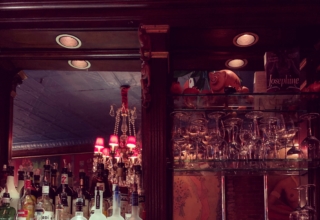
A young boy lingers near Arthur. He is asked by Arthur to identify why he retains hope about the future of Camelot. The young boy (Tom of Warwick) recites a statement about the values that serve as a foundation for the round table (not unlike the Delta statement placed on the wall of the Polis). With this recitation of the values (and vision) that remain with the younger generation of Camelot, Arthur finds renewed hope. He commands the boy to run away from the battlefield (and work for the restoration of the collaborative values of Camelot): “run boy run!!!” I was touched by this final scene of this musical when I first encountered Camelot and found it touching and reaffirming to be reminded of this scene while visiting Delta.
I think Joan would have similarly been touched. Like Arthur, she lived for a vision of justice and shared commitment. Like Arthur, Jeanne D’arc struggled with belief. They both lived in Hard Irony. If Joan was living in the land of Beta, she would probably have either been ignored as someone too young and of the wrong gender to lead the parade (or army). Though she was a fierce warrior – which the residents of Beta would like—she didn’t fit the mold of heroic warrior (because she was a woman and because her primary weapon and source of motivation was vision rather than vengeance). Maybe she could twirl a baton or play a piccolo in the band – but certainly not be the band master or (God-forbid) General of the armed forces! If she did somehow find her way to a position of leadership, Joan probably would have still been burned at the stake, having been declared a sinister “witch” or at the very least an enemy of the state.
I turn in a quite different direction when predicting the third hero of Delta. It would be Dag Hammarskjöld, the first General Secretary of the United Nations. He patiently brought people together from many nations. They shared few values or beliefs; yet they worked with Hammarskjöld on the creation of a joint enterprise of peace and collaboration. Hammarskjöld seems to exemplify the type of leader needed during the time of peace (while Joan exemplifies the type of leader needed during the time of war). I would not be surprised if the residents of Delta would savor the Irony inherent in the roles played by these two heroes: here is a male being engaged in peace and a woman engaged in war. What happened to the traditional roles!!
Download Article 1K Club
















